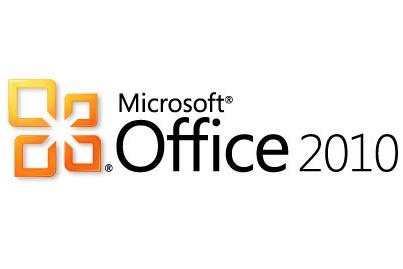
At a time when Cloud computing services for productivity tools are gaining steam, you would think that desktop software like Office 2010 would be on a downslide.
But Office 2010 is doing just fine thank you very much, despite the onset of the Cloud. Microsoft reported this week in a company blog post commemorating Office 2010's one-year anniversary that corporate customers have adopted Office 2010 software five times faster in its first year than Office 2007 did in its first year.
Office 2010 is also the fastest-selling consumer version of Office ever, says Microsoft. The software giant reports that nearly 50 million customers are using the Web-based version of Office (Office Web Apps) as well. Office Web Apps were created in part to fend off the threat of Google Apps, which has been struggling with enterprise adoption.
But however many Office 2010 upgrades Microsoft racks up, the new Office can be a disruption in the workplace, especially if your user base is moving from Office 2003 -- i.e. before the Ribbon interface.
After an Office 2010 migration is complete, support issues will invariably pop up. In a recent report entitled "Lessons Learned: Microsoft Office - Ensuring a Successful Migration" IT services and staffing company Technisource offers four Office 2010 support tips for staying ahead of user gripes, reducing service desk calls and making the most of your Office 2010 investment.
Make Training Mandatory
Training for both employees and the help desk team is critical and should take place before an Office 2010 deployment, writes Technisource. This will cut down on user complaints and confusion once Office 2010 is up and running. Training is something a company can do internally. Microsoft offers Office 2010 support and commercial training programs and free online guides are also available.
Goodbye Menus, Hello Ribbon
The controversial Ribbon design introduced in Office 2007 that uses ribbons instead of menu bars for navigation and editing is confusing for new users. But Microsoft has tools available to help users and service desk workers learn the new interface and command structure.
The Office 2010 Interactive Guide is a useful online tool that teaches users where menu and toolbar commands are located in Office 2010. The guide also provides a printable list of Office 2010 commands and buttons.
Give Workers Quick Reference Guides
In addition to formal training, Technisource recommends providing a "quick reference guide" that outlines the differences between Office 2003/2007 and Office 2010. Such guides can be purchased or can be compiled internally.
One Technisource client cited in the report developed short guides showing users the basic differences between Office versions, and posted the guides on the company's help desk support Web site.
IT programmed the message users receive when they call the help desk to direct them to where the reference guides are located online. Also links to the reference guide are emailed to users when they call the help desk, and if required, the company's IT support professionals walk users through a sample of the guide.
Customizing Office 2010
One way to alleviate Office 2010 support calls is to prevent situations from happening at all. Technisource notes that there are a variety of customization possibilities with Office 2010 that will help provide users with a standardized and easy-to-navigate environment.
One basic example: Putting key functions like "Print" in the Quick Access Toolbar to alleviate calls to the Service Desk asking, "How do I print?"
Shane O'Neill covers Microsoft, Windows, Operating Systems, Productivity Apps and Online Services for CIO.com. Follow Shane on Twitter @smoneill. Follow everything from CIO.com on Twitter @CIOonline and on Facebook. Email Shane at soneill@cio.com
Join the CIO Australia group on LinkedIn. The group is open to CIOs, IT Directors, COOs, CTOs and senior IT managers.
